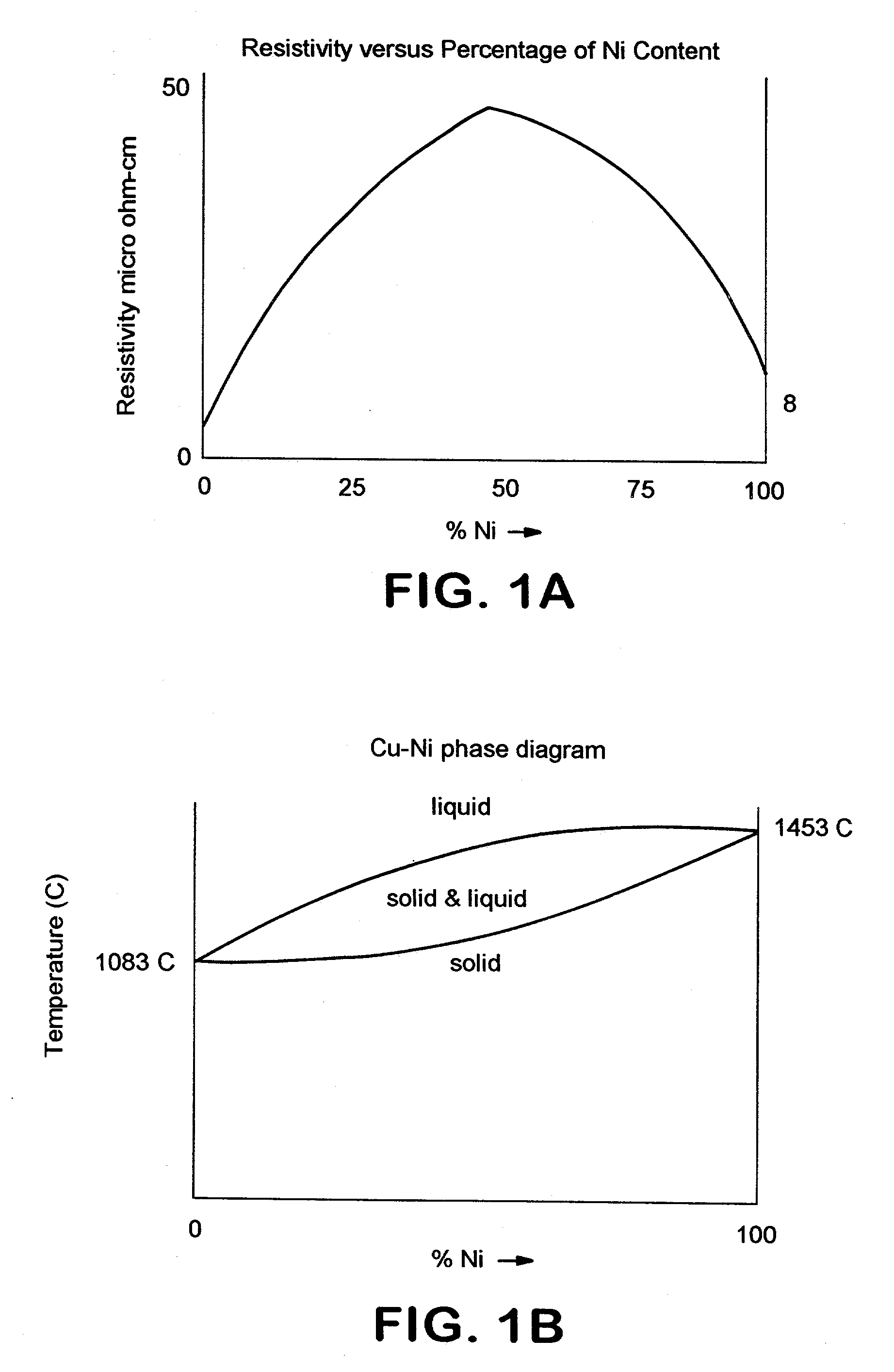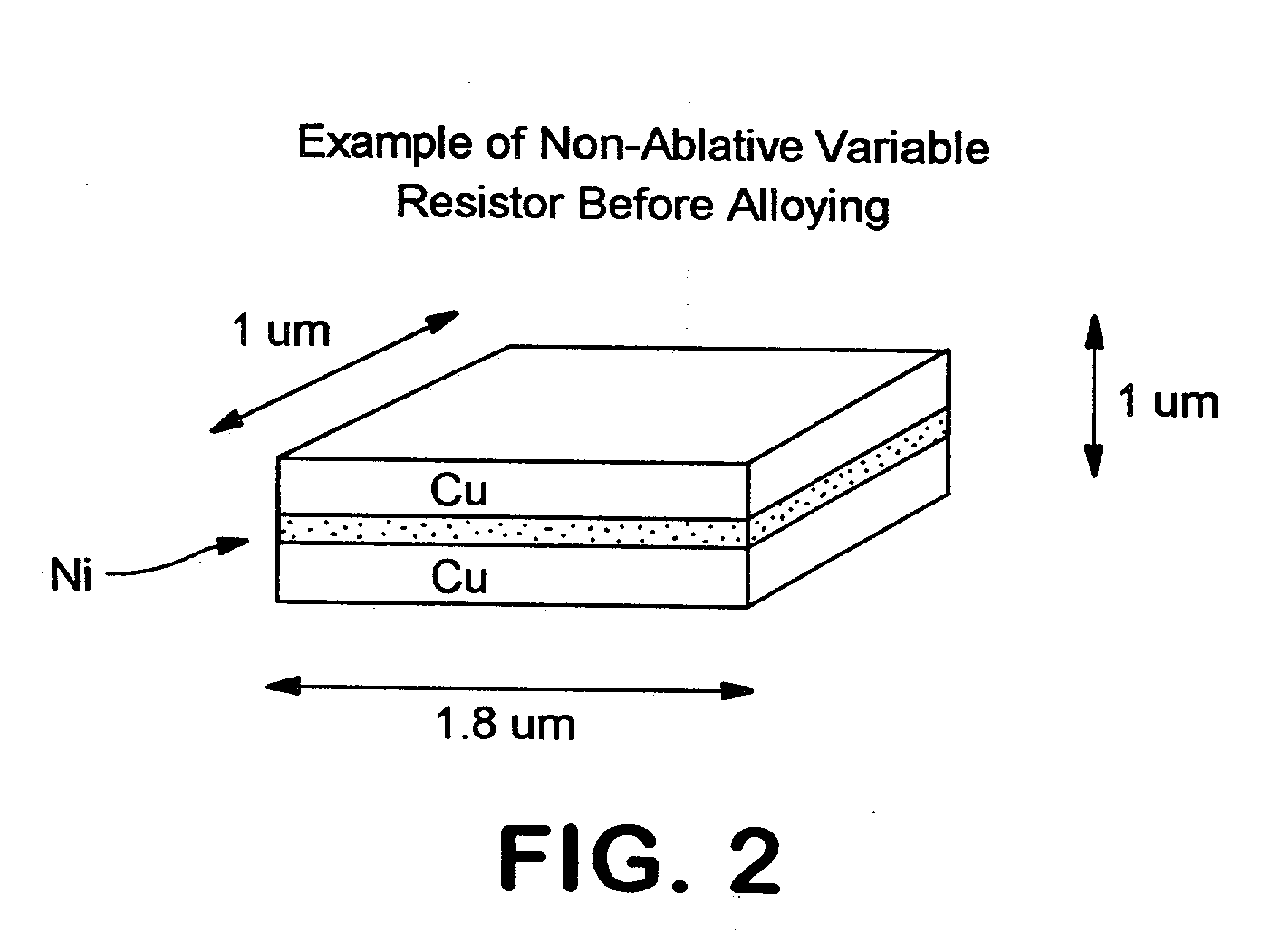Variable resistor structure and method for forming and programming a variable resistor for electronic circuits
a variable resistor and electronic circuit technology, applied in the direction of semiconductor devices, semiconductor/solid-state device details, electrical apparatus, etc., can solve the problems of inability to manufacture features and devices near the fuses, damage to surrounding circuitry, and penalties incurred
- Summary
- Abstract
- Description
- Claims
- Application Information
AI Technical Summary
Problems solved by technology
Method used
Image
Examples
Embodiment Construction
[0053] We have found that a variable resistor having an adjustable, precisely determined value that can be can be reliably and repeatedly manufactured can be obtained by using a lamination of two or more conductive materials, e.g., metals, that are subsequently at least partially alloyed. This non-ablative structure and method overcomes the problems associated with conventional approaches in programmable elements and impedance trimming, as discussed above.
[0054] Alloying two metals increases the resistance of the resulting alloy to a value greater than the resistance of either of the base metals. For example, in one embodiment, a lamination of copper (Cu) and nickel (Ni) are interdiffused to increase a resistor having a higher resistance than the original lamination before alloying.
[0055] One metal system ideally suited to this invention is the Cu--Ni system. Copper is a preferred metal of choice in BEOL interconnects wiring associated with high performance integrated circuits, espe...
PUM
 Login to View More
Login to View More Abstract
Description
Claims
Application Information
 Login to View More
Login to View More - R&D
- Intellectual Property
- Life Sciences
- Materials
- Tech Scout
- Unparalleled Data Quality
- Higher Quality Content
- 60% Fewer Hallucinations
Browse by: Latest US Patents, China's latest patents, Technical Efficacy Thesaurus, Application Domain, Technology Topic, Popular Technical Reports.
© 2025 PatSnap. All rights reserved.Legal|Privacy policy|Modern Slavery Act Transparency Statement|Sitemap|About US| Contact US: help@patsnap.com



